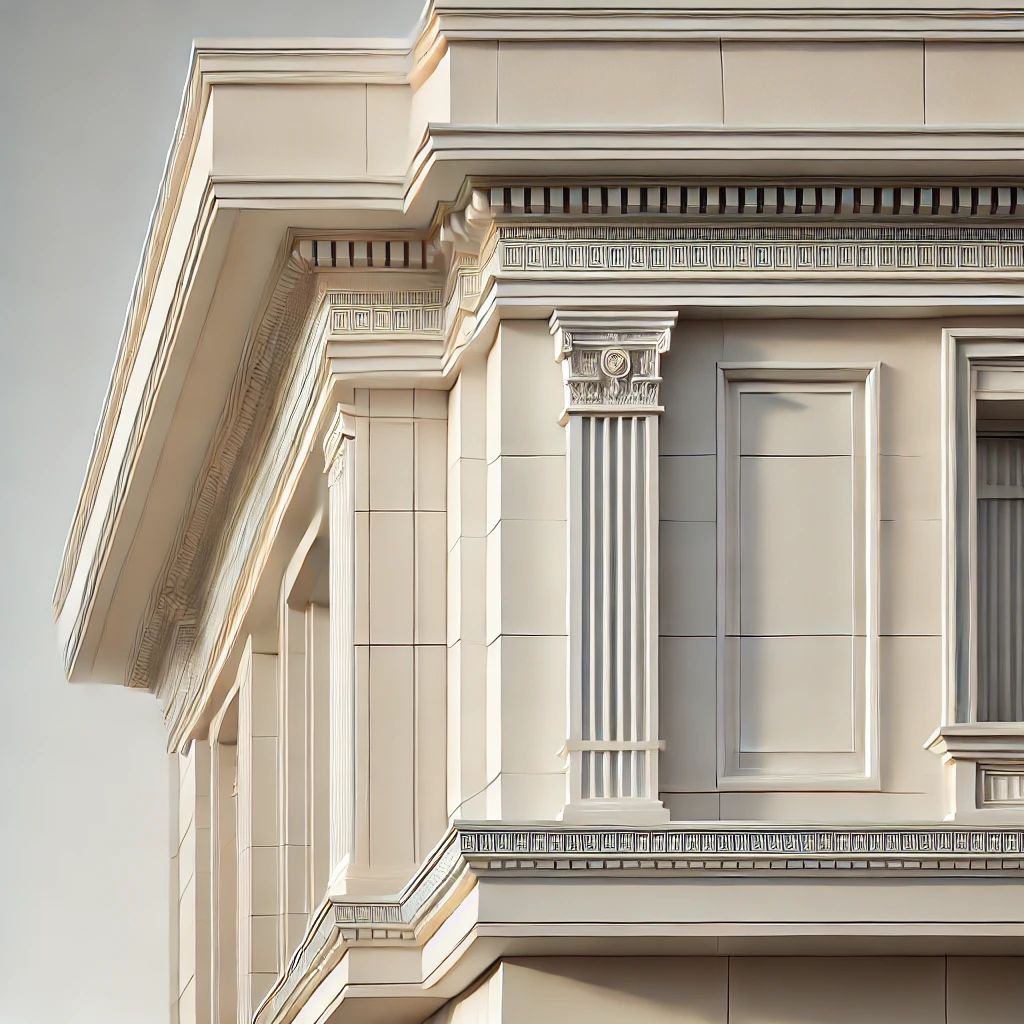Foam plastic, or polystyrene, has become an important material in architectural facade decor due to its light weight, versatility, and low cost. Its use began in the mid-20th century when more economical alternatives to materials like plaster and concrete were sought.

History and Popularization
Foam plastic began to be used in construction in the 1950s when its thermal insulation properties and light weight attracted the attention of architects. In the 1980s, foam plastic became popular for facade decor thanks to the development of technologies that allowed the creation of highly detailed elements such as cornices and columns. The light weight of foam plastic simplified installation, making it in demand in both new construction and renovations.
Modern Use
Since the early 2000s, foam plastic has been widely used thanks to improvements in processing and coatings that make it resistant to external influences. Today, foam plastic is used to create cornices, moldings, pilasters, and other architectural forms, as well as in interior decor, such as ceiling rosettes and panels. The material is easy to paint, providing flexibility in facade design.
Advantages and Disadvantages
The advantages of foam plastic include its light weight, affordability, and ease of installation. However, it is less durable than stone or concrete and requires maintenance. Despite this, foam plastic remains popular, especially in private construction and restoration, due to its ability to adapt to any architectural style and create expressive facades.
